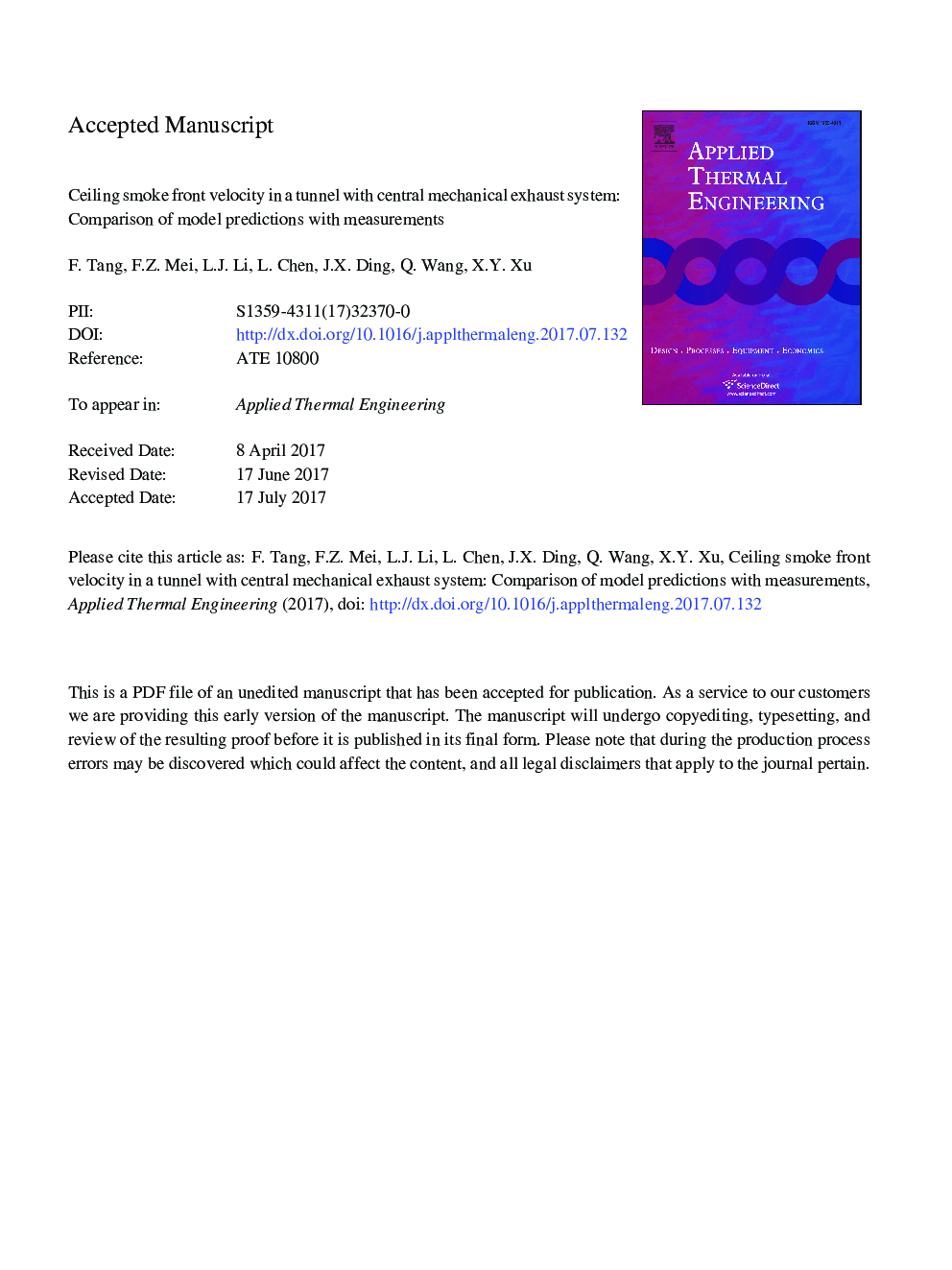| Article ID | Journal | Published Year | Pages | File Type |
|---|---|---|---|---|
| 4990753 | Applied Thermal Engineering | 2017 | 33 Pages |
Abstract
The front velocity of transient ceiling becomes an important consideration for tunnel fire safety, which provide a prediction of travel time of ceiling jet. The previous model predictions of ceiling jet front velocity were developed in a natural ventilation tunnel. The effect of central mechanical exhaust system on the ceiling jet front velocity have not been revealed in the past. This work experimentally revealed smoke front velocity of ceiling jet in a tunnel under the effect of central mechanical exhaust system, and the relative location between fire source and central exhaust system were considered. It is found that, the relative direction of fire source and ceiling mechanical extraction opening has a great influence on the smoke front velocity of ceiling jet. Some previous models (Jones, Benjamin, and CFAST) all overestimate the smoke flow velocity of ceiling front; the predicted ceiling jet front velocity deduced by Jones and Benjamin have the maximum excessive deviation of about 60% and 98%, respectively, but the CFAST model is closer to the measurements with relatively higher front velocity. The Hinkley's model can be well used to predict it with different central mechanical exhaust system.
Related Topics
Physical Sciences and Engineering
Chemical Engineering
Fluid Flow and Transfer Processes
Authors
F. Tang, F.Z. Mei, L.J. Li, L. Chen, J.X. Ding, Q. Wang, X.Y. Xu,
